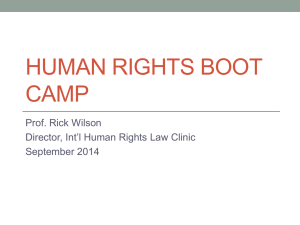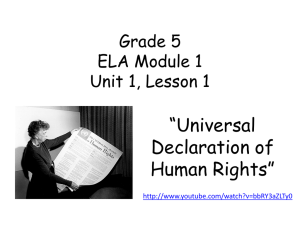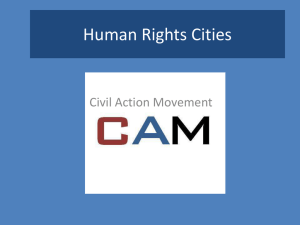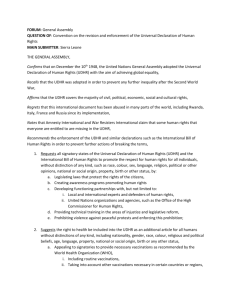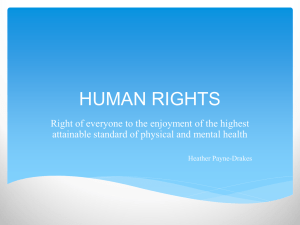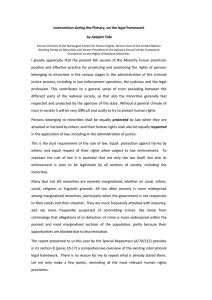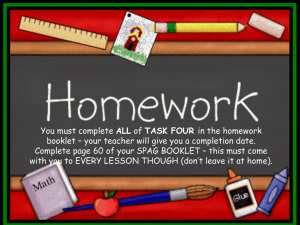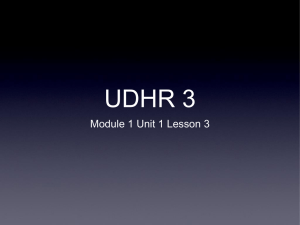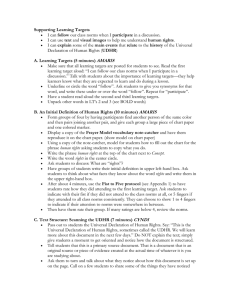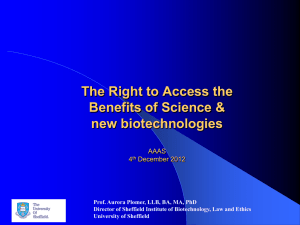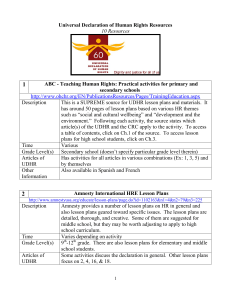Stand up for Human rights
advertisement
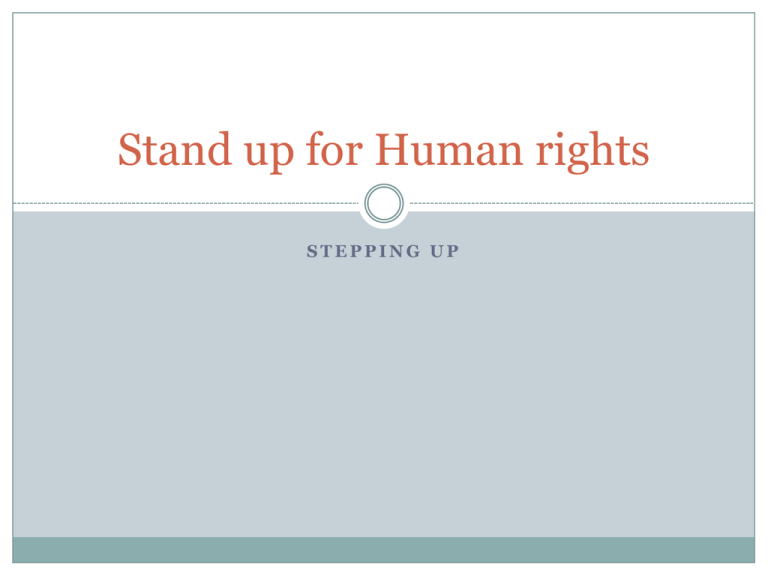
Stand up for Human rights STEPPING UP Introduction View “Wheel of Wisdom” and consider quotes. Do all people have equal rights? Brainstorm types of rights people should have. UDHR – Universal Declaration of Human Rights Why do human rights matter? About the UN Read article and think about “the most important role of the UN.” 1) Why do you think the events of World War II were keys in starting the UN? 2) What do you feel is the most important function of the UN? 3) Explain – “elevating the status of vulnerable groups such as women and children.” 4) What is the main message of this article? 5) define the following: international, vulnerable, humanitarian, crisis, poverty Every Man, Woman, and Child - Video What are your general impressions of the video? (3) What key ideas do you notice? How does the video support those ideas? Which graphics did you notice? What is the main message here? Crack Open the UDHR Why did they use a walnut image for this? How did the author help the reader to understand the word “genocide?” Write your own definition. What does exterminate mean? How does it relate to “terminate” Who created the UDHR? What does “cited” mean? Why is the UDHR a “statement of ideals” but not a “legal document?” Discovering JPH 1) How important was his role? 2) Did the document change after the first draft? How? 3) How did JPH’s experiences influence what he wrote and how he drafted the UDHR? 4) What was his job at the UN? 5) Why was he a good choice? 6) Is the UDHR still relevant today? Why or why not? Elders Speak 1) Do you feel the UDHR is still relevant today? 2) What does the term “elders” mean 3) What message are the elders sending to me? 4) Why do they want the world to reclaim the UDHR? 5) There were 6 elders – did they all have the same message? What was it? 6) Why do human rights matter? No Discrimination Magazine 1) Think about discrimination in school, community, and the world. What have you experienced, observed, read, viewed, or heard about? 2) How can we change attitudes that lead to discrimination? http://www.scholastic.ca/education/steppingupwith literacyplace/websupport_ts.html Student password: xK3jT71N And now, Ladies and Gentlemen… 1) What are stereotypes and stereotyping? 2) How does a comedian use humor to challenge stereotyping? 3) What stereotypes did Don Kelly challenge? 4) What message was he sending? Was it effective? 5) Would it be funny if a non-aboriginal Canadian made them? 6) Will everyone respond to the humor the same way? Apply and Practice pg. 59 – teacher led activity* Cartoon 1) What do you expect from a cartoon? 2) What issue is raised in this cartoon? 3) define inequity and inequality. 4) Did you know pay inequity is a problem? 5) What is irony? It is ironic that they want an equal pay expert, but want a girl because she will be cheaper than a man. Get Heard! 1) What are some actions you can take to ensure everybody’s voice is heard? 2) Do you feel a youth’s perspective should be represented in “official institutions”? 3) Define – “engaging features and content” 4) What is the biggest barrier to joining a Youth Council? 5) Was this action story effective in delivering its message? Why or why not? Killer Discrimination Why did they choose the title “Killer Discrimination?” What issues do Rosa Brooks and Jeffrey White raise? Is homophobic bullying the same or different than other kinds of bullying? Do you think Azmi should have reported it to the BC human rights commission? Could anyone else have helped? What is “stigma?” Killer Discrimination What do you think about Naomi Brooks description of homophobia as a learned attitude? What aspects of discrimination did Rosa object to? Why do some people discriminate against someone they think is different? What impact does this bullying have on its victims? Why do some not want to discuss bullying based on sexual orientation? What needs to change? One Man’s Walk. Define: prestigious Write a point about the following perspectives: Boy who rejects Kenneth because he looks different. Brother who makes a film with Kenneth. Mother who lives with Kenneth. Friends who helped make the film. Did you like the film? Why or why not? Food and Shelter for All - William’s Story What did William’s family grow? What does it need? Where did he live? Why didn’t the government help the people? How did William describe starving? Why did he drop out of school? What did he hope the windmill would do for his family? How long did it take to build? What do you think saved William? Could you do something like this? What would you have done? Stand Up for Human Rights Project: Project must be completed by yourself. You must create a slideshow examining human rights. You can share what you learned, or debrief a story regarding human rights. Feel free to be creative. Need to have a cover slide and a reference slide. Rough Work: You should create a “story board” highlighting the information and layout of your show. This also counts as a pre-write. Stand Up for Human Rights Project: Slideshow: Slideshow must contain at least 6 slides: 1) Cover Page Names, class, date. 2) Introduction Explain topic, direction of project, or main statement 3) Main content or body. 4) Some type of pictures, hyperlinks, or something interactive. 5) Facts: Interesting points, ideas, stories, etc. 6) References. Stand Up for Human Rights Project: E-mail your presentations: cjaiken@edu.pe.ca You must pass in the rough work before you present the show. You will be marked by the accompanying rubric. Good luck and have fun. Stand up for human rights!
